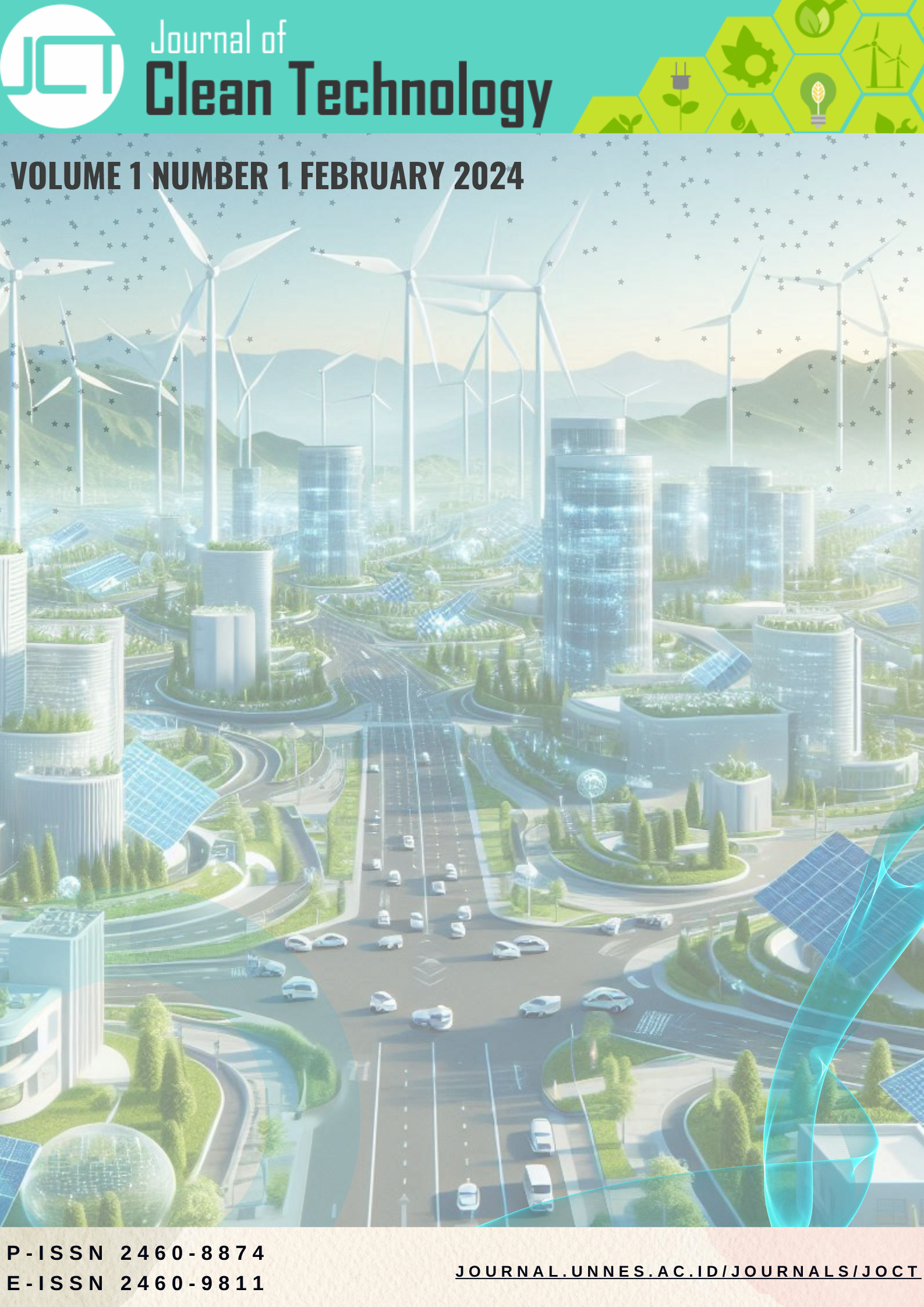Utilization of Rice Straw Waste as a Source of Bioenergy: A Review
DOI:
https://doi.org/10.15294/joct.v1i1.1657Abstract
The rice straw waste is a byproduct of rice processing and is a plentiful natural resource in Indonesia. It has been utilized as a renewable energy source to decrease reliance on fossil fuels and tackle worldwide energy concerns. Rice straw waste contains various organic compounds, such as 36.6% cellulose, 25.3% hemicellulose, and 14.3% lignin. These compounds can be converted into various types of bioenergy, such as bioethanol, biogas, biomass, and bioelectricity through fermentation and pyrolysis processes. Rice straw waste has significant potential as a raw material in bioethanol production, biogas and bio-oil. rice straw waste also has the potential to produce bio-oil through the pyrolysis process. Tiny organisms, like bacteria and fungi, have a crucial part in the creation of bioethanol, biogas, and bio-oil. These microscopic organisms will be used in the process of fermentation, decomposition, or other biochemical reactions to convert rice straw waste into the desired renewable energy source. In the production of bioethanol, the use of enzymes such as amylase or cellulase may be required to break down the raw materials into simpler components that can be converted through the fermentation process into bioethanol. The process of producing biogas involves utilizing an anaerobic digester, which is a controlled environment devoid of oxygen. In this environment, microorganisms decompose the organic material found in rice straw waste and generate biogas. The methods used in the production of bioenergy (bioethanol, biogas and bio-oil) from straw waste may vary depending on the context and available technology.
Downloads
Published
Article ID
1657Issue
Section
License
All articles published in The Journal of Clean Technology (JoCT) are licensed under the Creative Commons Attribution-NonCommercial-NoDerivatives 4.0 International License (CC BY-NC-ND 4.0).
Under this license, readers are free to share, copy, and redistribute the material in any medium or format for non-commercial purposes, provided that the following terms are met:
-
Attribution: Proper credit must be given to the original author(s) and source, including a link to the license and an indication of any changes made (if applicable).
-
NonCommercial: The material may not be used for commercial purposes.
-
NoDerivatives: If the material is remixed, transformed, or built upon, the modified material may not be distributed.
The full license terms can be viewed at: https://creativecommons.org/licenses/by-nc-nd/4.0/
Authors retain the copyright of their articles and grant The Journal of Clean Technology the right of first publication with the work simultaneously licensed under this Creative Commons license.
